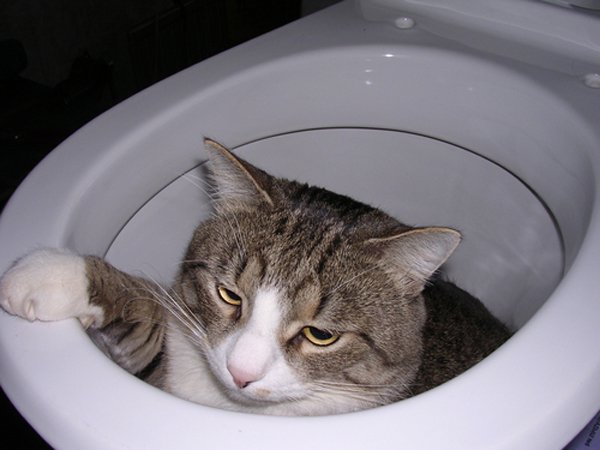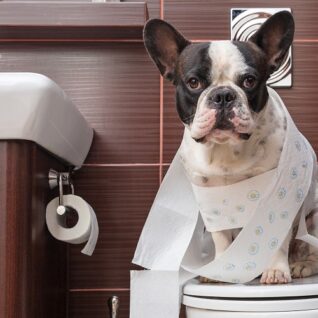My Value of Not Emptying Animal Waste Down the Toilet
My Value of Not Emptying Animal Waste Down the Toilet
Blog Article
We have found this article relating to 10 Things You Should Never Flush Down The Toilet below on the internet and believe it made sense to discuss it with you on this site.

When it comes to throwing away waste, particularly animal waste, many individuals commonly resort to the hassle-free option of flushing it down the bathroom. However, this relatively very easy solution can have major repercussions for the environment and public health. In this post, we'll discover why flushing pet waste down the commode is a negative concept and provide alternative methods for proper disposal.
Introduction
Correct garbage disposal is essential for maintaining environmental sustainability and public health. While it might appear harmless to flush animal waste down the toilet, it can bring about numerous problems, both for the setting and human wellness.
Risks of flushing pet waste
Ecological impact
Purging animal waste introduces unsafe germs and pathogens right into rivers, which can negatively influence aquatic ecosystems. These microorganisms can contaminate water sources and injury marine life, interrupting fragile ecological communities.
Public health worries
Pet waste consists of unsafe bacteria such as E. coli and Salmonella, which can pose serious health risks to humans. Flushing animal waste down the commode can contaminate water supplies, leading to the spread of diseases and infections.
Alternatives to flushing
As opposed to purging pet waste down the toilet, there are a number of alternate disposal techniques that are a lot more environmentally friendly and hygienic.
Composting
Composting pet waste is a green method to dispose of it. By composting, raw material is broken down into nutrient-rich soil, which can be made use of to fertilize yards and plants.
Land fill disposal
Disposing of pet waste in a landfill is an additional choice. While not as environmentally friendly as composting, it is a more secure choice to flushing, as it stops the contamination of water resources.
Pet dog waste disposal systems
There are customized animal garbage disposal systems offered that securely and hygienically throw away animal waste. These systems typically make use of enzymes to break down waste and remove odors.
Steps to correct pet waste disposal
To make sure correct disposal of pet waste, follow these steps:
Scooping and getting waste
Regularly scoop and bag animal waste utilizing eco-friendly bags. This stops waste from polluting the atmosphere.
Making use of assigned waste containers
Dispose of bagged animal waste in assigned waste bins, such as compost bins or landfill containers. Stay clear of flushing it down the bathroom in any way costs.
Cleaning can and animal areas regularly
Consistently tidy can and animal areas to stop the buildup of waste and microorganisms. Usage pet-safe cleaning items to maintain health.
Benefits of proper disposal techniques
Embracing appropriate disposal methods for pet waste provides numerous advantages:
Lowered environmental pollution
Appropriate disposal techniques reduce the risk of environmental pollution, securing rivers and environments from contamination
Reduced threat of water contamination.
By staying clear of flushing pet waste down the commode, the danger of water contamination is dramatically reduced, securing public health.
Boosted sanitation and health
Proper disposal methods promote much better hygiene and health, producing a more secure setting for both people and animals.
Conclusion
To conclude, purging pet waste down the commode is dangerous website to the atmosphere and public health. By adopting alternative disposal approaches and adhering to appropriate waste monitoring techniques, we can reduce the adverse effect of animal waste and contribute to a cleaner, much healthier planet.
What To Do With Dog Poo – The Do's And Don'ts Of Disposing Of Faeces
Dog poo bins
Some councils provide dedicated dog waste bins in popular dog-walking areas that can take dog poo that has been bagged but you can legally dispose of dog waste in any public litter bin, as long as it is securely bagged. This also applies to your wheelie bin at home.
Do not flush
Water companies do not recommend flushing dog faeces down the toilet because certain parasites can survive the water processing treatment and are potentially harmful to humans. You should also never consider flushing dog poo that has been bagged down the toilet as the bags will not break down and instead create severe blockages in the sewage system.
In the woods
The Forestry Commission promotes a ‘stick and flick’ method for dealing with waste in the woods. This means finding a stick and using it to flick any poo from off the path so that it is out of the way of other walkers. You could also bury it as long as it is not in an area where there might be livestock.
Livestock
Parasites found in dog poo can be transmitted to livestock if they inadvertently eat infected faeces that has been left on grazing land. This could result in the death of sheep or abortion in cattle so you should always make sure you pick up your dog’s waste in fields where livestock could be present.

Consistently tidy can and animal areas to stop the buildup of waste and microorganisms. Usage pet-safe cleaning items to maintain health.
Benefits of proper disposal techniques
Embracing appropriate disposal methods for pet waste provides numerous advantages:
Lowered environmental pollution
Appropriate disposal techniques reduce the risk of environmental pollution, securing rivers and environments from contamination
Reduced threat of water contamination.
By staying clear of flushing pet waste down the commode, the danger of water contamination is dramatically reduced, securing public health.
Boosted sanitation and health
Proper disposal methods promote much better hygiene and health, producing a more secure setting for both people and animals.
Conclusion
To conclude, purging pet waste down the commode is dangerous website to the atmosphere and public health. By adopting alternative disposal approaches and adhering to appropriate waste monitoring techniques, we can reduce the adverse effect of animal waste and contribute to a cleaner, much healthier planet.
What To Do With Dog Poo – The Do's And Don'ts Of Disposing Of Faeces
Dog poo bins
Some councils provide dedicated dog waste bins in popular dog-walking areas that can take dog poo that has been bagged but you can legally dispose of dog waste in any public litter bin, as long as it is securely bagged. This also applies to your wheelie bin at home.
Do not flush
Water companies do not recommend flushing dog faeces down the toilet because certain parasites can survive the water processing treatment and are potentially harmful to humans. You should also never consider flushing dog poo that has been bagged down the toilet as the bags will not break down and instead create severe blockages in the sewage system.
In the woods
The Forestry Commission promotes a ‘stick and flick’ method for dealing with waste in the woods. This means finding a stick and using it to flick any poo from off the path so that it is out of the way of other walkers. You could also bury it as long as it is not in an area where there might be livestock.
Livestock
Parasites found in dog poo can be transmitted to livestock if they inadvertently eat infected faeces that has been left on grazing land. This could result in the death of sheep or abortion in cattle so you should always make sure you pick up your dog’s waste in fields where livestock could be present.

As a serious reader on , I imagined sharing that post was worthwhile. For those who liked our blog entry plz consider to pass it around. Thanks for taking the time to read it.
Suggested Site Report this page